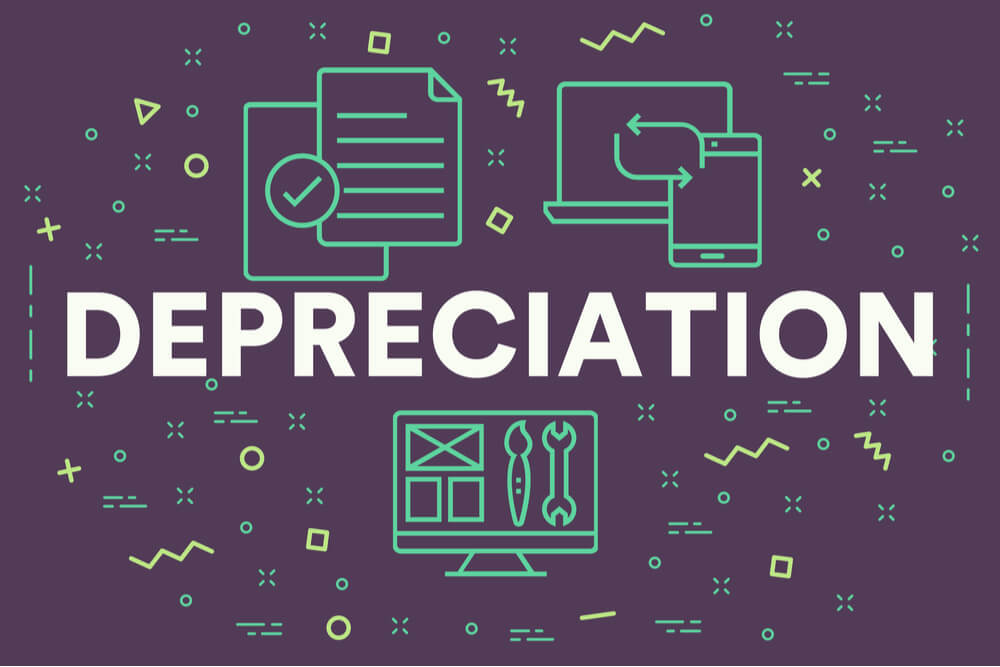 Last updated: December 17th, 2024 4:58 PM
Last updated: December 17th, 2024 4:58 PM
Income Tax Depreciation
The applicability, rate and concept of depreciation vary between Companies Act and Income Tax Act in India. Under the Income Tax Act, an assessee has to fulfill the following conditions to claim depreciation expense:- The asset should be owned by the assessee. If an assessee carries on business or profession in a building that is taken on lease, he/she is entitled to depreciation in respect of the capital expenditure incurred after 31st March 1970 on the construction of any structure or any work in relation to the building by way of improvement, renovation or extension.
- The asset must have been used for the purpose of busienss. If the asset is used partly for business and partly for private or personal purposes, a reasonable proportion of the depreciation attributable to the business user of the asset is allowed.
- The hire purchase agreement must show that as long as hirer discharges his/her obligation, the hirer has an uninterrupted right over the asset for all practical purposes.
- The seller will eventually lose all rights, title and interest in asset if the hirer discharges his/her obligation.
Disallowance of Depreciation
If an assessee incurs any expenditure for acquisition of a depreciable asset in respect of which a payment, otherwise than by an account payee cheque/draft or bank transfer, exceeds Rs.10,000 such payment shall not be eligible for normal/additional depreciation (applicable from AY2018-19)Block of Assets
The term block of assets has been defined to mean a group of assets falling within a class of assets in respect of which the same depreciation rate is prescribed.Depreciation Rates
There were 13 different blocks of assets till AY2017-18. From AY2018-19, the maximum rate of depreciation has been reduced to 40% and the number of blocks of assets has been reduced to 9. The depreciation rates applicable from AY2018-19 are as follows:| Block | Asset Type | Depreciation Rate |
| Block 1 | Buildings - Residential buildings other than hotels and boarding houses | 5% |
| Block 2 | Buildings - Office, factory, godowns, or buildings which are not mainly used for residential purpose | 10% |
| Block 3 | Buildings: a. Acquired on or after September 2002 for installing machinery and plant forming part of water supply project or water treatment system and which is put to use for the purpose of business of providing infrastructure facilities under Section 80-IA. b. temporary erections such as wooden structures | 40% |
| Block 4 | Furniture - Any furniture/fittings including electrical fittings | 10% |
| Block 5 | Plant & machinery - Any plant or machinery and motor cars (other than those used in a business of running them on hire) acquired or put to use on or after April 1, 1990 | 15% |
| Block 6 | Ocean-going ships, vessels ordinarily operating on inland waters including speed boats. | 20% |
| Block 7 | Plant and machinery - Buses, lorries and taxies used in the business of running them on hire, machinery used in semi-conductor industry, moulds used in rubber and plastic goods factories. | 30% |
| Block 8 |
Plant and machinery -
a. Aeroplanes, aeroengines, life saving medical equipment and plant and machinery which satisfy conditions of rule 5(2)
b. Containers made of glass or plastic used as refills and the following:
|
40% |
| Block 9 | Intangible assets - Know-how, patents, copyrights, trademarks, licenses, franchise and any other business or commercial rights of similar nature | 25% |
Written Down Value (WDV) Computation
Written down value of an asset can be calculated for an asset as follows: Step 1: Find the depreciated value of the block of assets on April 1, 2018. Step 2: To this value, add actual cost of the asset acquired during the previous year relevant for the assessment year. Step 3: Deduct money received, receivable in respect of asset which is sold, discarded, demolished or destroyed during the previous year. The amount deducted cannot exceed the value of block of assets under step 2.Calculating Depreciation
Depreciation expense under the Income Tax Act is calculated on the basis of written down value and depreciation rate as mentioned in the table above. For example, if the written down value of a building is Rs.10 lakhs in the previous year and 10% depreciation rate is applicable, then Rs.1 lakh will be the depreciation expense and the depreciated value of the asset at the end of year would be Rs.9 lakhs. The above method of depreciation calculation is not applicable in the cases mentioned below:- If the assessee incurs any expenditure for acquisition of a depreciable asset in respect of which a payment of more than Rs.10,000 given in cash.
- If the written down value of a block of asset is empty or ceases to exist on the last day of the previous year.
- If the written down value of a block of asset is reduced to zero through the block is not empty.
- In the case of imported cars.
- In the case of succession or amalgamation or business re-organisation.
- If in the first year in which an asset is acquired and it is put to use for less than 180 days.
Popular Post

In the digital age, the convenience of accessing important documents online has become a necessity...

The Atalji Janasnehi Kendra Project that has been launched by the Government of Karnataka...

The Indian Divorce Act governs divorce among the Christian couples in India. Divorce...

When an individual has more than a single PAN card, it may lead to that person being heavily penalised, or worse,...

Employees Provident Fund (PF) is social security and savings scheme for employee in India. Employers engaged...


